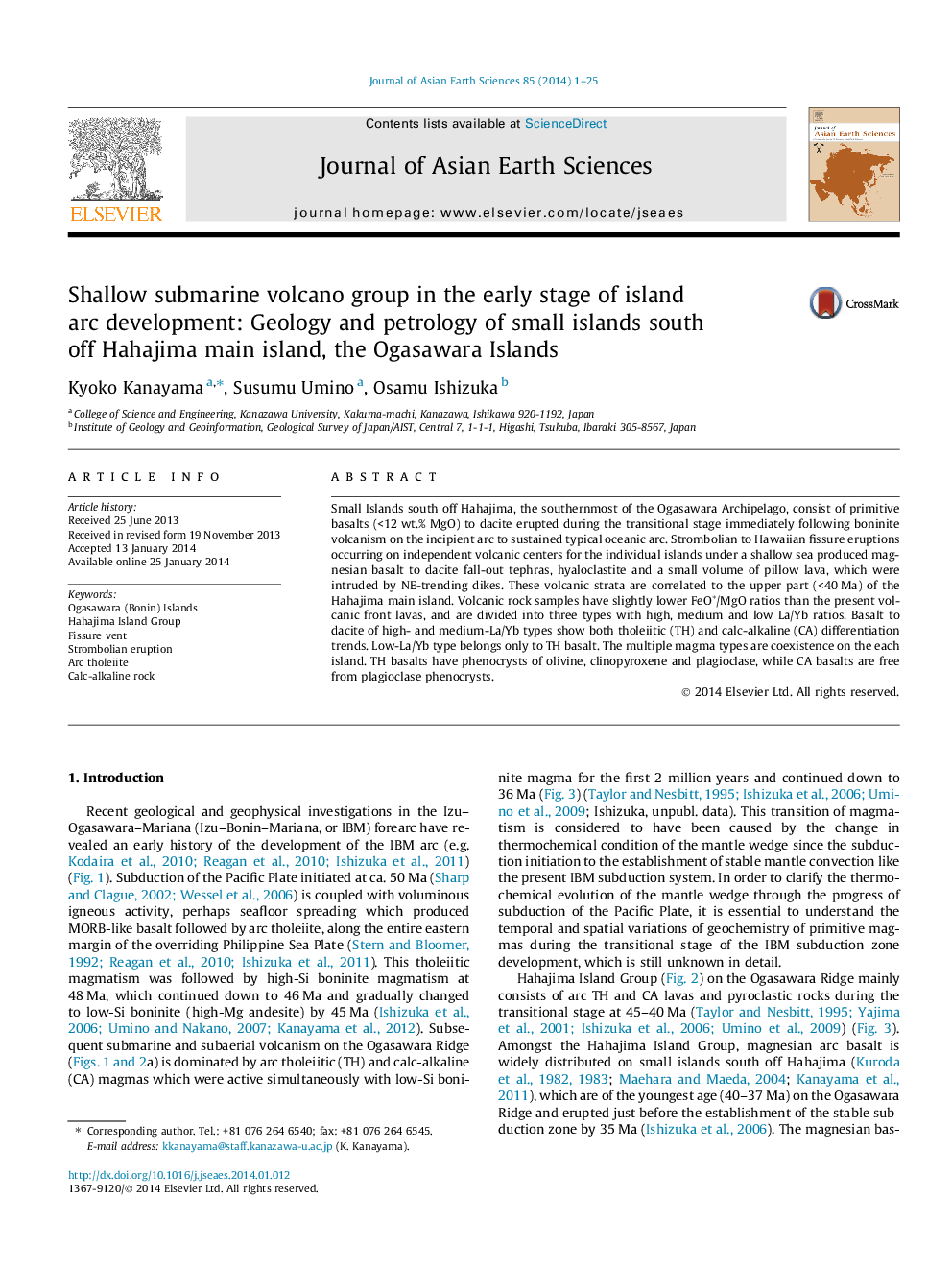| Article ID | Journal | Published Year | Pages | File Type |
|---|---|---|---|---|
| 4730645 | Journal of Asian Earth Sciences | 2014 | 25 Pages |
•We report the detailed geology and petrology of the islands south off Hahajima.•Tholeiitic and calc-alkaline basaltic to basaltic andesite are dominant.•FeO*/MgO ratio of the rocks is slightly lower than the present frontal lavas.•The volcanic rocks are divided into high, medium and low La/Yb types.•The strata were formed by Strombolian to Hawaiian eruptions under a shallow sea.
Small Islands south off Hahajima, the southernmost of the Ogasawara Archipelago, consist of primitive basalts (<12 wt.% MgO) to dacite erupted during the transitional stage immediately following boninite volcanism on the incipient arc to sustained typical oceanic arc. Strombolian to Hawaiian fissure eruptions occurring on independent volcanic centers for the individual islands under a shallow sea produced magnesian basalt to dacite fall-out tephras, hyaloclastite and a small volume of pillow lava, which were intruded by NE-trending dikes. These volcanic strata are correlated to the upper part (<40 Ma) of the Hahajima main island. Volcanic rock samples have slightly lower FeO*/MgO ratios than the present volcanic front lavas, and are divided into three types with high, medium and low La/Yb ratios. Basalt to dacite of high- and medium-La/Yb types show both tholeiitic (TH) and calc-alkaline (CA) differentiation trends. Low-La/Yb type belongs only to TH basalt. The multiple magma types are coexistence on the each island. TH basalts have phenocrysts of olivine, clinopyroxene and plagioclase, while CA basalts are free from plagioclase phenocrysts.
